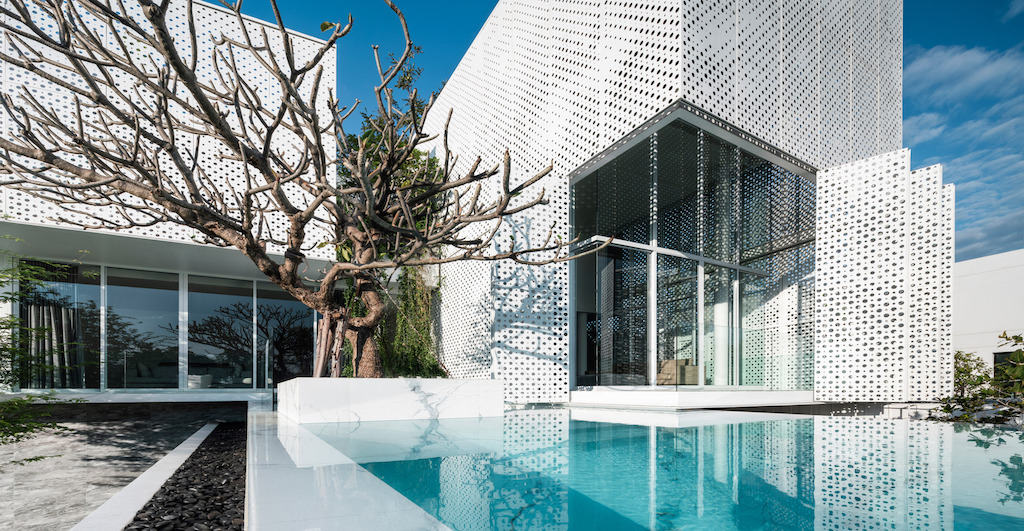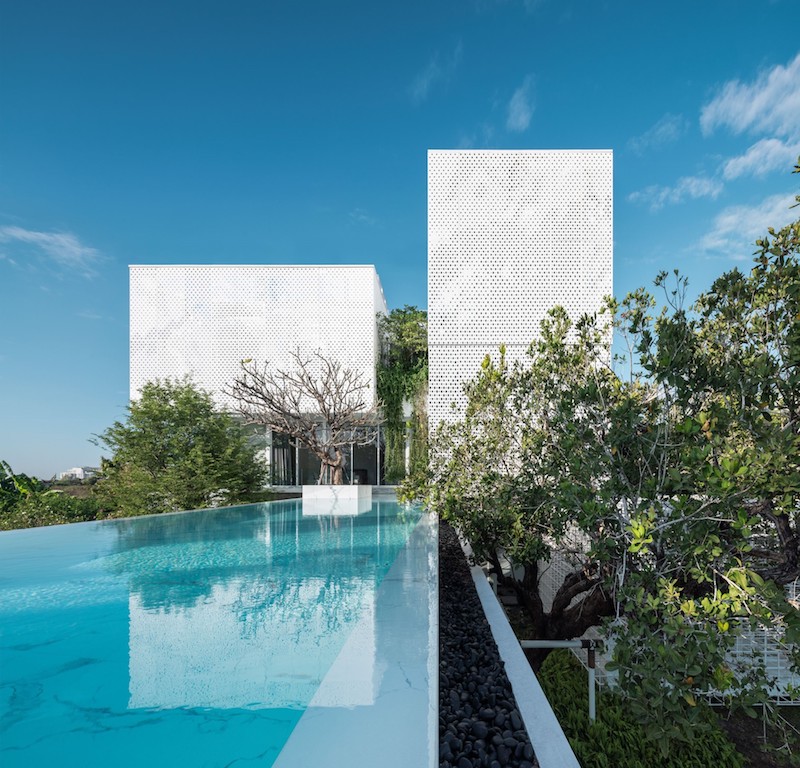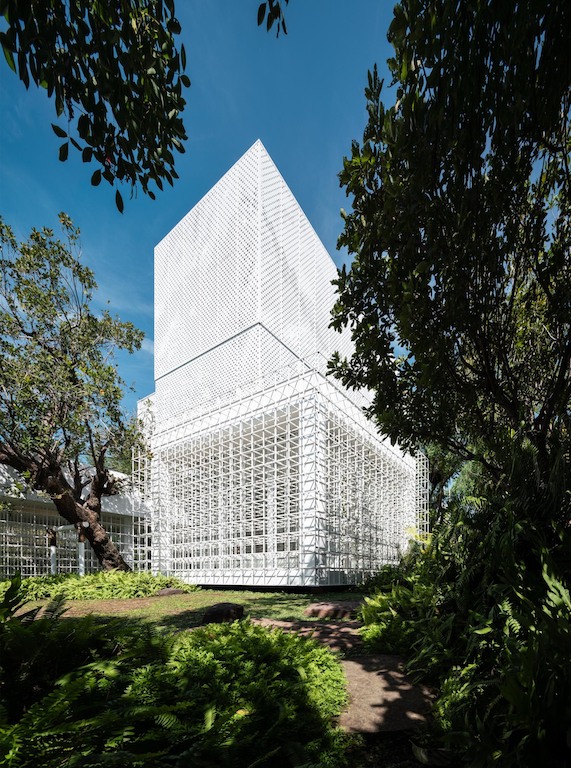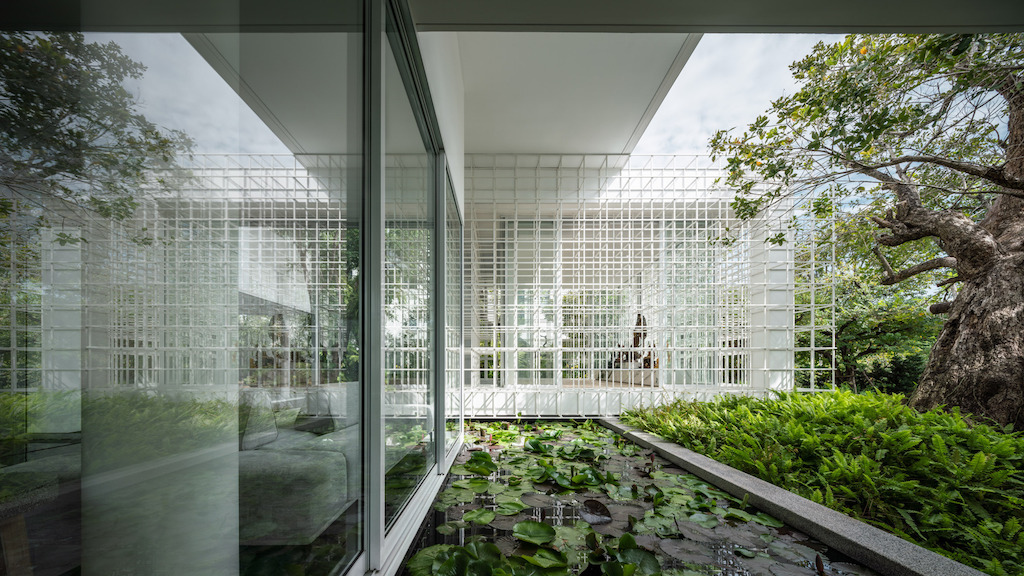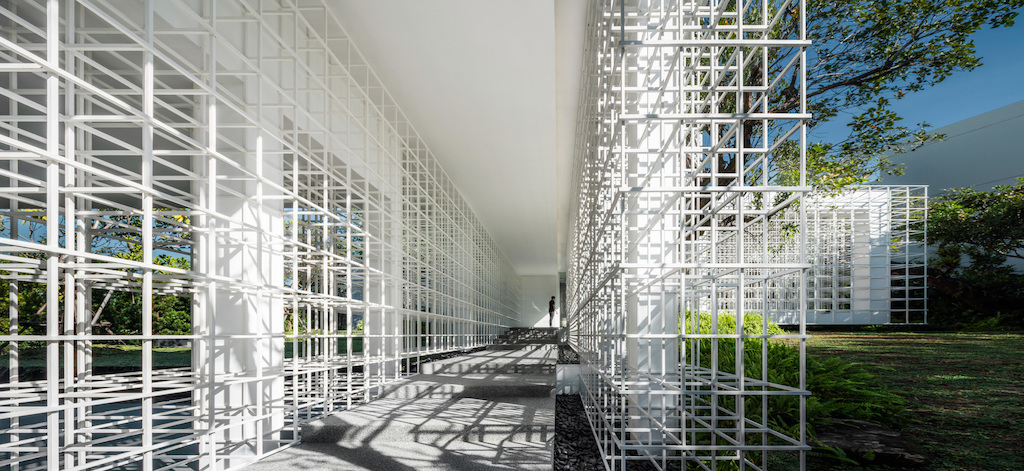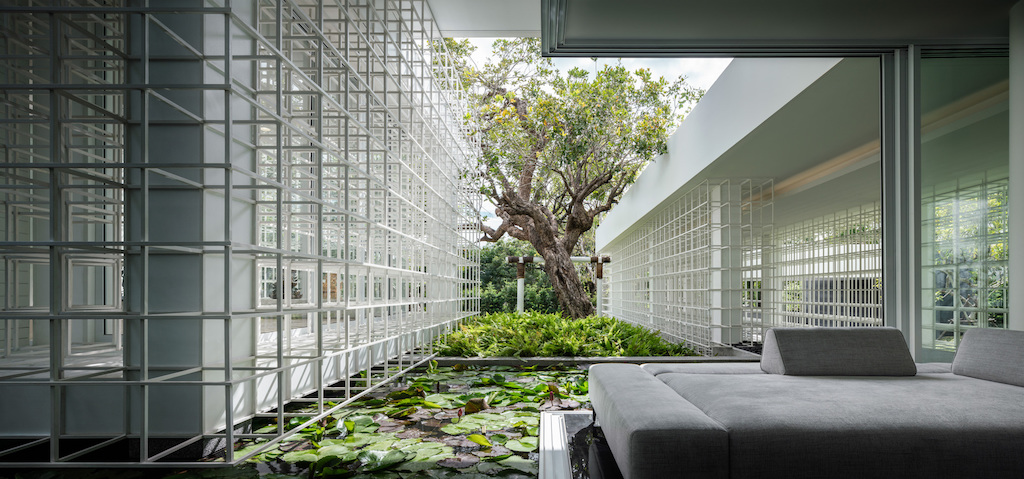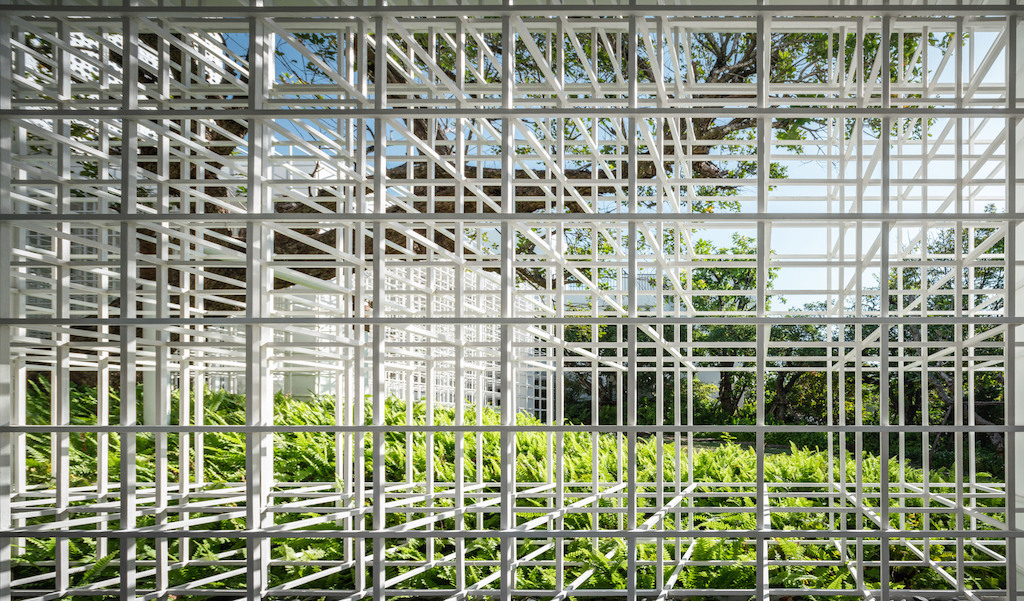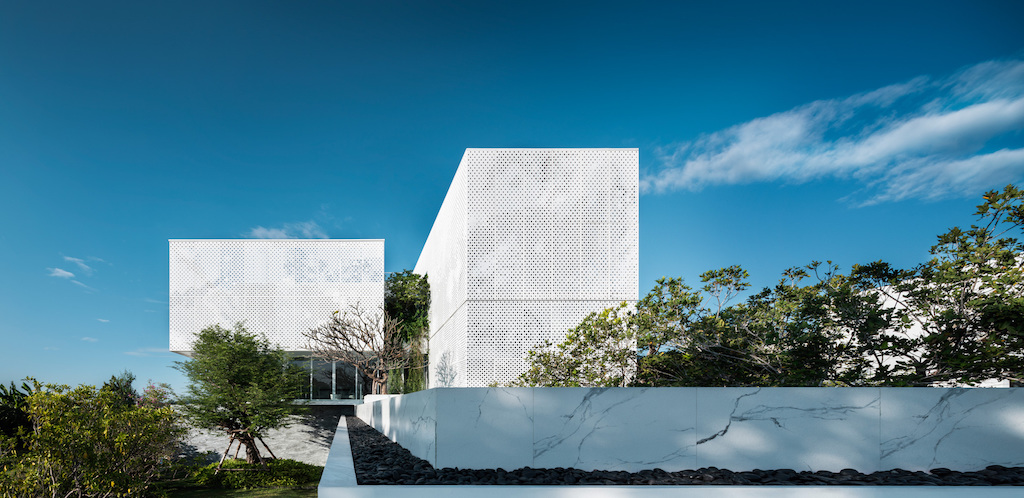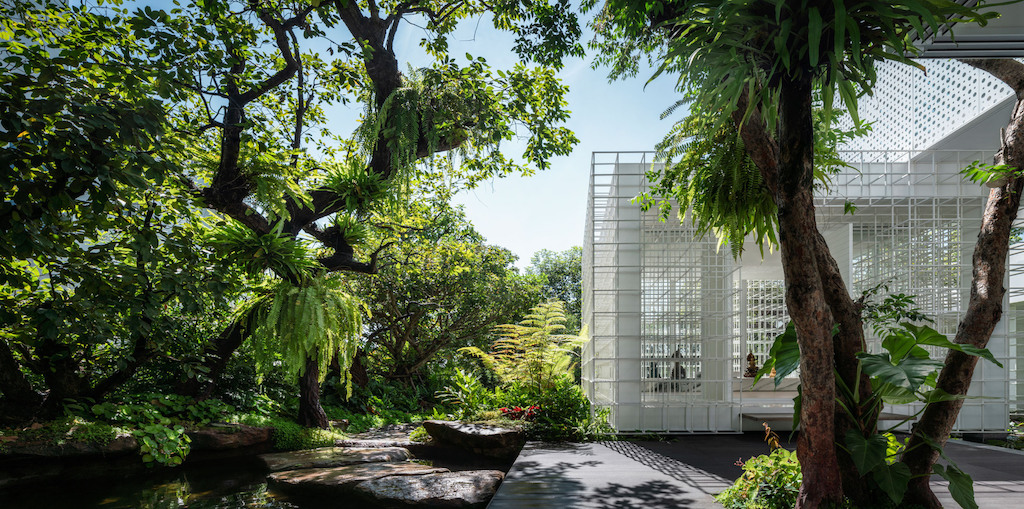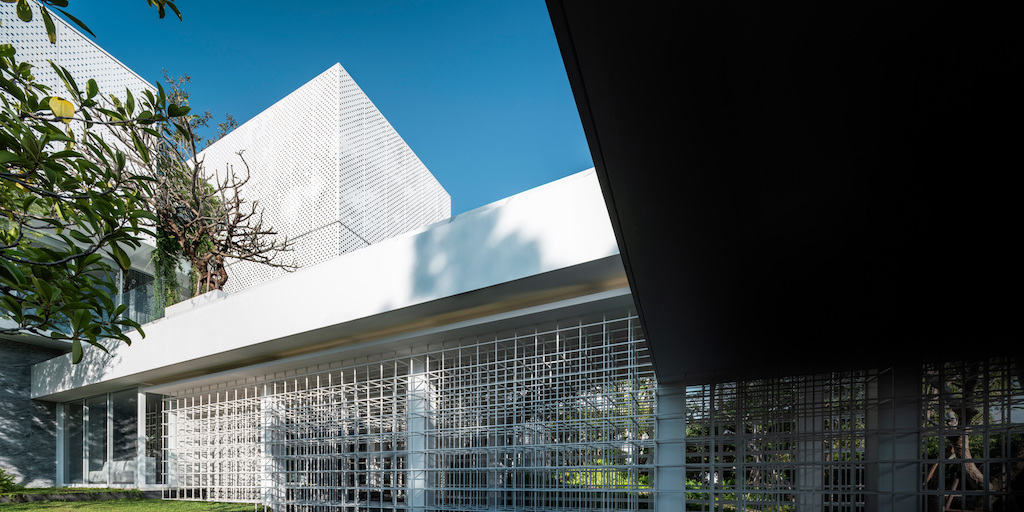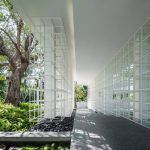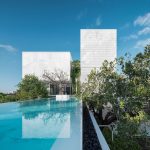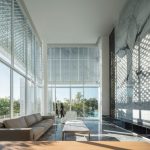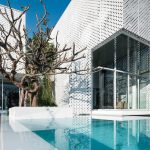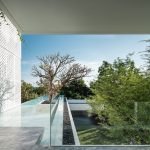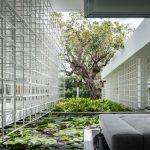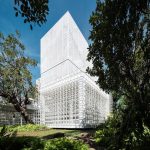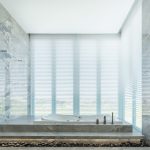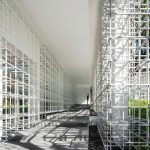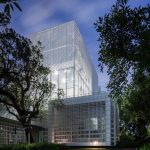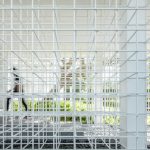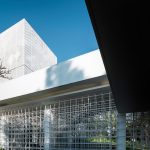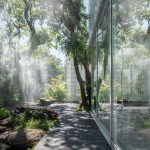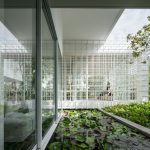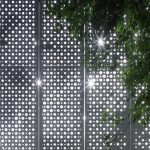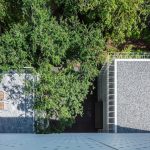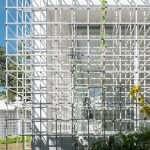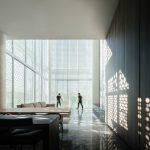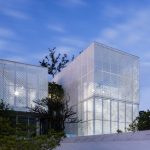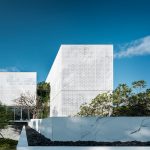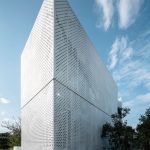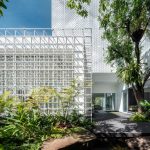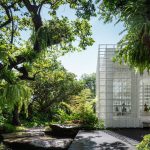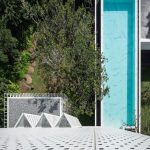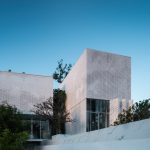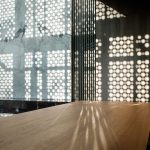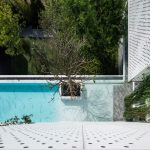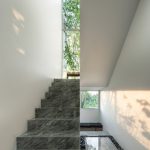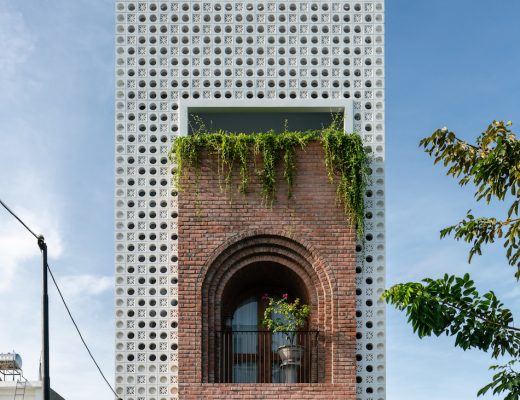Bangkok-based practice Ayutt and Associates Design (AAd) was approached by a nature-loving couple to design a 950m² private residence that needed to have a green living focus yet not be disconnected from modern conveniences. So AAd team of architects including Ayutt Mahasom, Suvatthana Sattabannasuk, and Napatgarn Limwanuspong proposed an alternative design solution to mitigate this urban-dwelling challenge by crafting Shade House, a self-sustainable residence, implanted with an individual natural ecosystem that aims to become a part of a larger urban ecology and a solution for next generation of housing. The practice achieved this by increasing the importance of natural surroundings as the main protagonist of this project.
Initially planned to be a two-storey private residence, the architects decided against it as this would have caused its functions to spread out almost all over the entire site – going against the objective of creating the least possible footprint. So it was designed as a three-story house with the parking lots placed separately in the front.
The new strategy helped to raise the green area by more than 60%, which is twice the minimum requirement of green area regulations in Bangkok. Together with adding pocket gardens at every corner of the house and a green roof, the overall green space of this house was boosted to 90%. By the time the vegetation has fully grown and covers all the house’s elevations, the green area will be as much as 150% larger than the initial site area. Consequently, it will meet the original intention of both – the house owners and the architects — to maximise the senses of natural scene perception on-site by establishing a life-long dialogue between the dwellers and the surrounding nature.
The architects decided to lift and place a swimming pool on the second floor, along with the family living space, to leave the most open area on the ground floor for landscaping and maintaining the house owners’ privacy. This creates a new sensory experience of nestling the seamless infinity pool among the clouds of tree leaves, creating a visual connection to the sky beyond. AAd design team also proposed a different type of room arrangement that each floor will be completely independent in terms of function and equipped each unit with a bathroom, kitchen and pantry, garden, and terrace.
The first-floor level houses a “garden villa” guest unit. Visitors can access this guest suite by passing through the main foyer or entering the unit immediately through a side door, located adjacent to the waterfall. The rest of the living spaces which need more privacy and security, reserved only to the house’s owners, are placed on the higher floors. The “pool villa” suite on the second floor is designed to be embedded among the trees. Its floor-to-ceiling windows focus on one approach — the sculptural Plumeria and the swimming pool. The third-floor unit that rises above the tree canopy has a panoramic view of the landscape closer to the Suvarnabhumi airport.
By putting all the living spaces on the upper floors, all the rooms mimic a treehouse. Tree leaves and bushes provide privacy but also help moderate the temperature. The living room facade makes use of the air gap in the perforated aluminium panels to prevent the house from being heated as well as allowing sunlight and air ventilation to pass through. If measured during the summer season, these panels help cool down the interior by up to 13 degrees Celsius – from 39 degrees Celsius outside to 26 degrees Celsius inside.
The size of the façade holes is also determined accordingly to the usage of the function inside. For example, the holes of the living-room perforated facades are punched larger at the standing level and the couch-seating level, while the holes at the sleeping level inside the bedroom are punched smaller in order to secure privacy, but also to provide wayfinding inside the house while maintaining privacy from any outside view.
One of the most eye-catching elements of this house is the white slender steel rods joined together as a sculptural rigid frame. It forms geometric volumes that create an immediate connection from the entrance staircase to the house’s main foyer. This sculptural detail not only encloses an outdoor terrace but also frames a focal point and making the pathway more intuitive, adventure-evoking. A series of voids and openings, created by the white continuous frame, draws visitors forward.
Upon reaching closer to the main door, a lotus pond appears to join the eyes, revealing another set of rigid frames standing among the pond. As you move throughout the property, you are greeted with unexpected views of the landscape that unfold during the journey through the house. Serving as a security and privacy feature, the white steel rods used in the rigid frame create an illusion of a denser frame because of the overlapping design technique. A signature element in the firm’s work, these rigid frames to hover over different types of wall materials – some envelop the solid walls, some embrace the opaque part, and some encompass the transparent glazing windows; these all create different dynamic views of the house.
You might also like:
Semi-detached Bangkok house with pockets of greenery inside counters urbanisation
Enter Projects designs yoga studio in Bangkok fusing craftsmanship and 3D geometric forms
The architects also had to be mindful of the requirement of a meditation space for one of the property owners who is a psychologist. The design team decided to place the Buddha pavilion among the garden, in the middle of the land plot to take advantage of the green and serene surroundings. Generally, in Thai culture, architects always use the leftover space of the house for a shrine which often ignores the fact that spaces need to be more breathable.
Therefore, by making the Buddhist shrine a garden pavilion and enveloping it with transparent glazing panels, this creates opportunities for the room to be a part of other functions and interaction, while still maintaining its peaceful atmosphere. The pavilion is also covered with the steel-rod rigid frames, which create a mirror effect, rendering the room elevations opaque. At the end of the day, the client together with the designers expect the ivy to grow along the rigid frames as an extra layer, which will slowly turn the pavilion to be entirely green.
As creating an ecosystem is the main concept of the Shade House, AAd plans to design the spatial experience by integrating various kinds of landscapes around the house. When observing the house from outside, one sees nothing but only hears the relaxing sound of the waterfall. While stepping closer to the house, the rigid frames start to reveal the location of the Buddhist pavilion and lotus pond, then moving on to the waterfall embracing the first-floor guest unit at the corner of the house.
If entering the house via the parking lot, one will see a more formal stepped garden, that is planned to be the rice terrace when the season comes. On the second floor, landscape planning becomes less formal and more minimal by emphasising the reflection pool and a plumeria tree among other vegetation. The third-floor plant spaces, designated for the pocket gardens, are compact enough not to block the views of the outside beautiful landscape scenery; and the rooftop is visualised as a fruit garden. With this project, the design team interprets this white house similar to the white canvas that when the owners move into the house, they can start to create their own painting by planting colourful trees and flowers. As time goes by, the greenery will swallow the white background – a result which the architects want the family to grow old with and enjoy the peace and nature as the trees grow along with the house.
See the full image gallery here:
Photos: Chalermwat Wongchompoo

